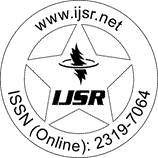Downloads: 154 | Views: 594 | Weekly Hits: ⮙1 | Monthly Hits: ⮙1
Research Paper | Food Science | India | Volume 7 Issue 10, October 2018 | Rating: 6.4 / 10
Bioaccumulation of Heavy Metals in Cuttlefish Sepiella Inermis from Visakhapatnam Coastal Waters
R. Rekha, B. Ganga Rao
Abstract: This study investigates 9 elements both essential (Cr, Cu, Zn, Fe, Mn and Ni) and non essential (Cd, Hg and Pb) in the tissues and whole of the cuttlefish Sepiella inermis caught off Visakhapatnam coast (east coast of India, Bay of Bengal). The level of elements was determined by atomic absorption spectrophotometry (AAS). The concentration ranges found for these heavy metals, expressed on a wet weight basis, were as follows Hg, Cd, Pb, Cu, Zn, Fe, Mn, Cr, and Ni concentrations in cuttlefish muscle samples were 0.01 - 0.07, 0.11-0.67, 0.11-1.14, 0.52-6.08, 4.82-19.32, 0.08-5.84, 0-0.49 and 0-2.11, 0-0.92 ppm respectively. As for other cephalopod species, the liver showed the highest concentrations of many elements highlighting their role in bioaccumulation and detoxification processes. The mean values of highly hazardous metals in the muscle of the Sepiella inermis, were Hg = 0.04, Cd = 0.481, Pb = 0.525, Cr = 0.662, all within the international safety limits. The level of contamination in Sepiella inermis by these heavy metals is compared to those studied in other parts of the world and the legal standards set by international legalizations. The levels of heavy metal in Sepiella inermis was found to be within the safe limits for human consumption.
Keywords: heavy metal, Bay of Bengal, accumulation, cuttlefish, Sepiella inermis
Edition: Volume 7 Issue 10, October 2018,
Pages: 687 - 693
